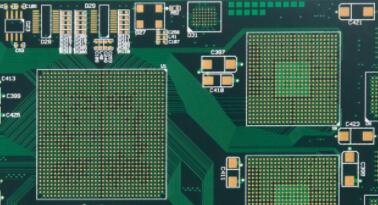PCB reflow hot plate is the process of remelting the pre-distributed paste-like solder on the printed board solder pads to achieve mechanical and electrical bonding between the solder ends or pins of surface assembled components and the printed board solder pads.

PCB reflow hot plate is the process of soldering components onto a PCB board, which is used for surface mount devices. By relying on the action of hot air flow on the solder joint, the adhesive-like flux undergoes physical reactions under a certain high-temperature airflow to achieve the welding of SMD mount devices. The reason why it is called a "reflow hot plate" is because the gas (nitrogen) circulates in the welding machine to generate high temperatures and achieve the welding purpose.
PCB reflow hot plate is generally divided into four working areas: heating area, insulation area, welding area, and cooling area.
1) When the PCB enters the heating zone, the solvent and gas in the solder paste evaporate. At the same time, the flux in the solder paste wets the solder pad, component ends, and pins. The solder paste softens and collapses, covering the solder pad, isolating the solder pad, component pins, and oxygen.
2) The PCB enters the insulation zone to fully preheat the PCB and components, to prevent the PCB from suddenly entering the welding high-temperature zone and damaging the PCB and components.
3) When the PCB enters the welding area, the temperature rapidly increases, causing the solder paste to reach a molten state. Liquid solder wets diffuse, diffuses, or mix with the solder pads, component ends, and pins of the PCB to form solder joints.
4) The PCB enters the cooling zone, causing the solder joints to solidify and complete the entire reflow soldering process.
Advantages of PCB reflow hot plate
1. The advantage of this process is that it makes the temperature easy to control, prevents oxidation during the welding process, and makes manufacturing costs easier to control.
2. It has a heating circuit inside, which heats nitrogen gas to a sufficiently high temperature and blows it towards the circuit board where the components have already been attached, allowing the solder on both sides of the components to melt and bond with the motherboard.
3. When reflow soldering technology is used for welding, it is not necessary to immerse the printed circuit board in molten solder but to use local heating to complete the welding task. Therefore, the welded components are subject to minimal thermal shock and will not be damaged due to overheating.
4. Because welding technology only requires the application of solder at the welding site and local heating to complete the welding, welding defects such as bridging are avoided.
5. In reflow soldering technology, the solder is disposable and there is no need to reuse it. Therefore, the solder is pure and free of impurities, ensuring the quality of the solder joint.
The working principle of PCB reflow hot plate
The basic working principle of reflow soldering is to heat the solder pads already coated with solder paste on the circuit board and pre-installed electronic components, allowing the solder paste to melt and connect with the solder pads on the circuit board and the pins of electronic components, thereby achieving soldering.
Reflow hot plate generally adopts a high-temperature heating method, usually using hot air or infrared radiation for heating. Before starting welding, it is necessary to first use specialized equipment such as a printing machine to apply solder paste to the solder pads on the circuit board and the pins of electronic components. When circuit boards and electronic components are placed in reflow soldering equipment, the heating system will preheat them and gradually increase the temperature until reaching a constant temperature state.
After the welding temperature reaches the specified welding temperature, the process is maintained for a certain period to ensure complete welding. After the soldering time is over, the circuit board can be removed from the reflow soldering equipment and subjected to subsequent testing, inspection, and other processes.
The process flow of the reflow hot plate is generally divided into four steps:
1. Printing solder paste: Solder paste with solder particles attached to the solder pads of components on the circuit board.
2. SMD: Send the circuit board coated with solder paste into an automated SMD machine to achieve automatic installation of SMD components on the circuit board.
3. Reflow hot plate: The circuit board with already installed components is heated to a certain temperature to melt the solder paste, and the solder paste in the circuit board solder pad and the component patch under the solder pad are combined at a high temperature to achieve soldering.
4. Inspection/Testing: After welding is completed, electrical performance inspection and reliability testing are required to ensure that the product meets certain quality standards.
PCB reflow hot plate can connect the solder joints of circuit boards and surface mount components in the shortest possible time, making the solder joints more secure and reducing the possibility of poor soldering.